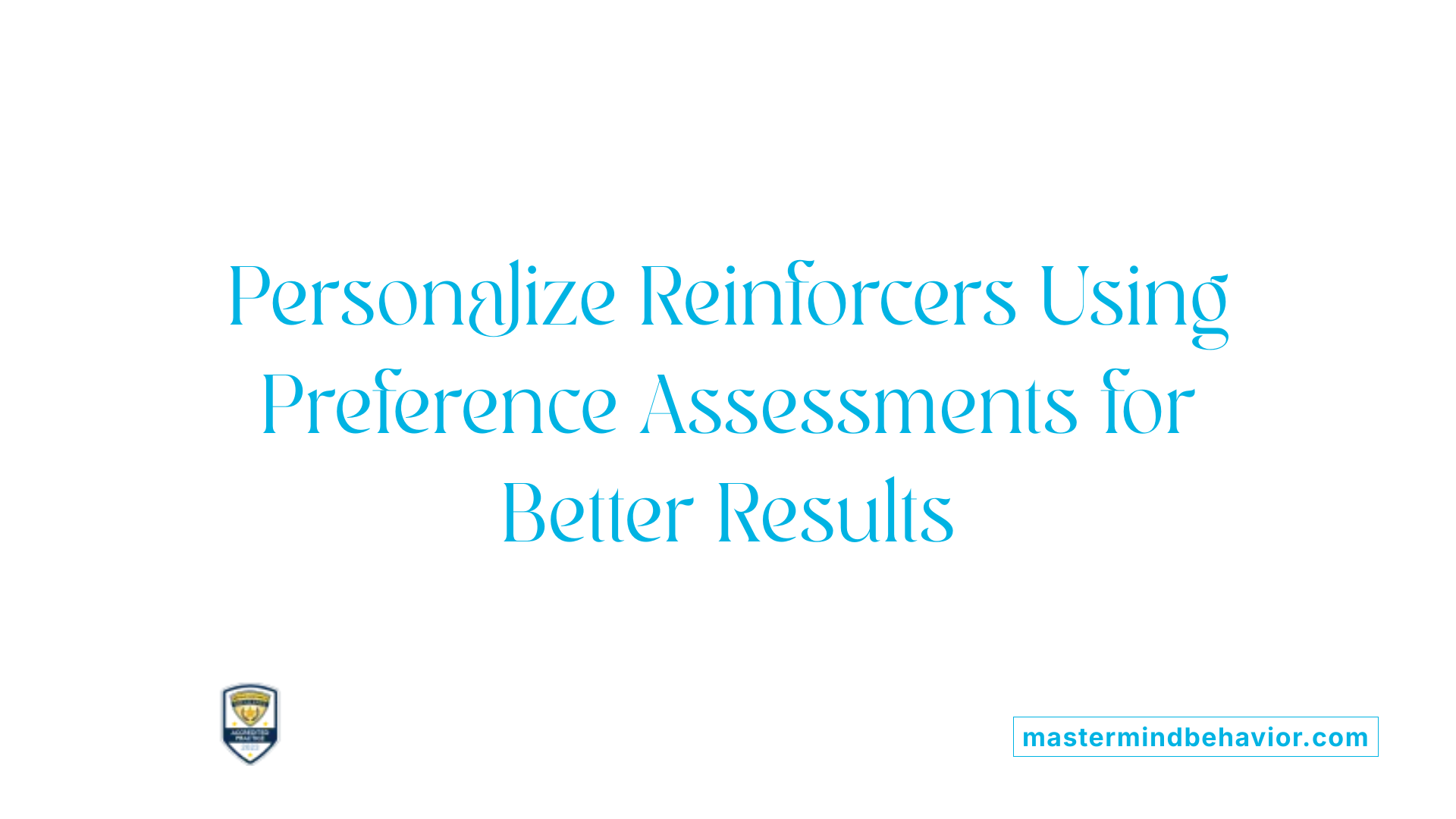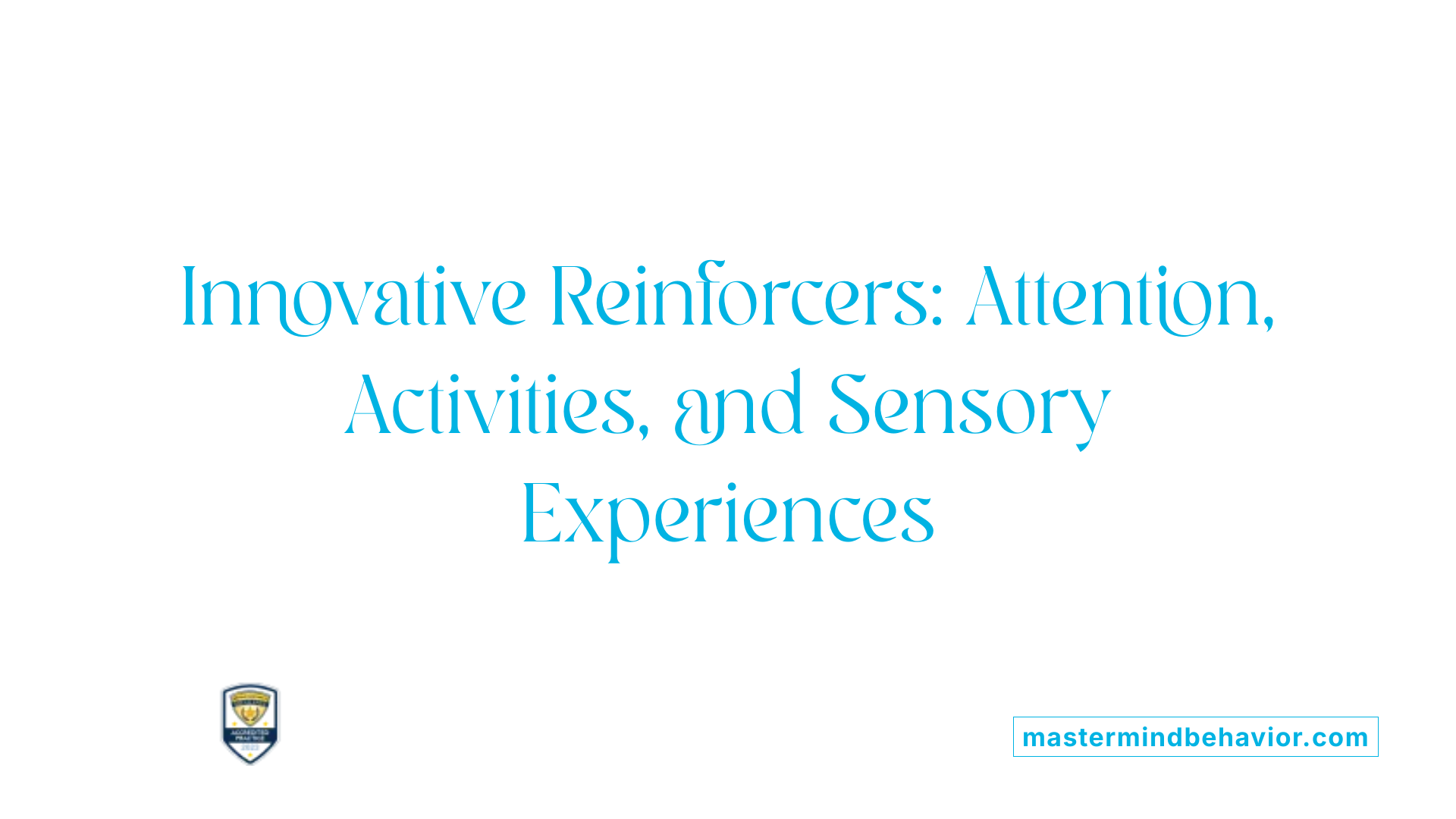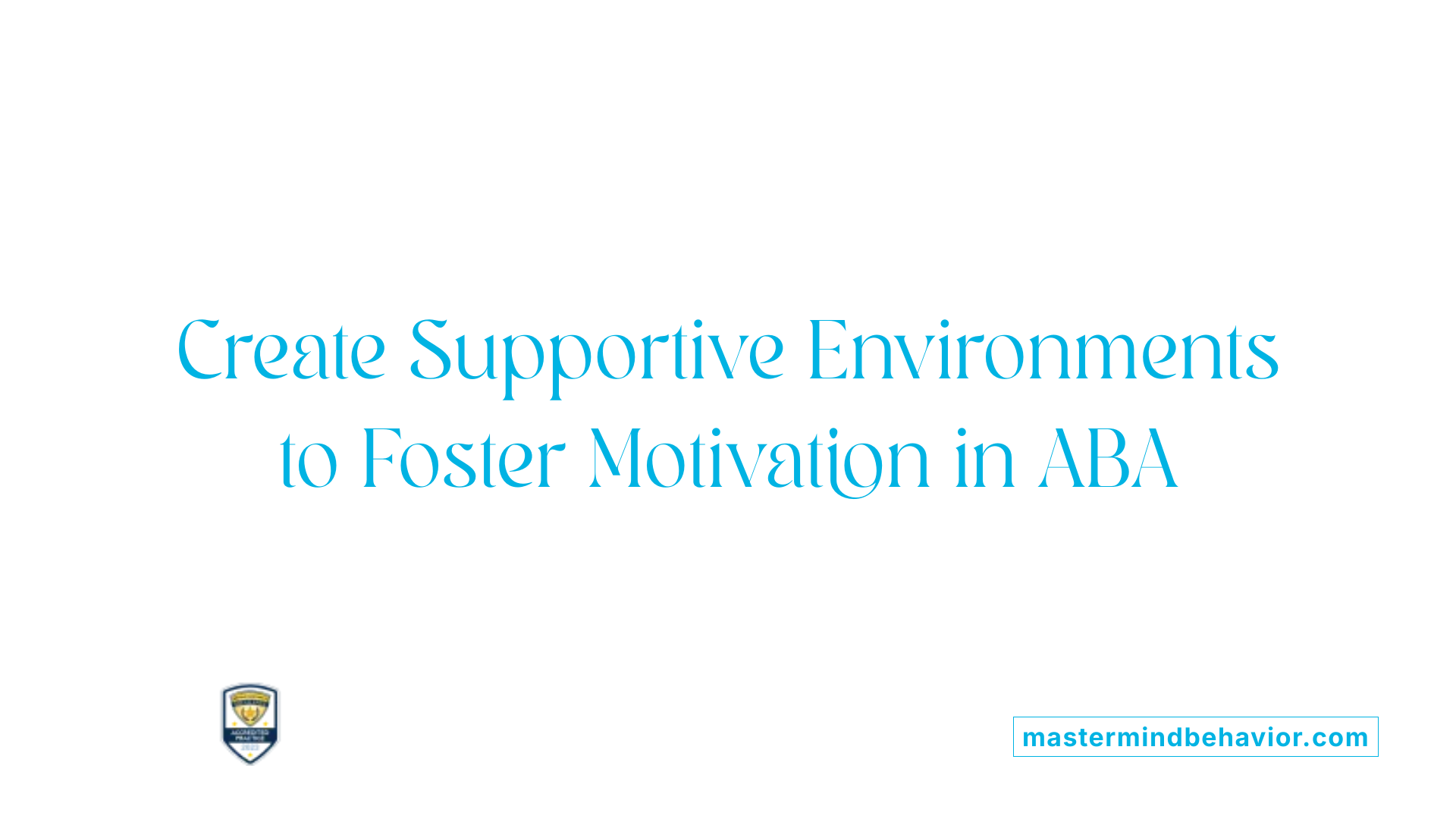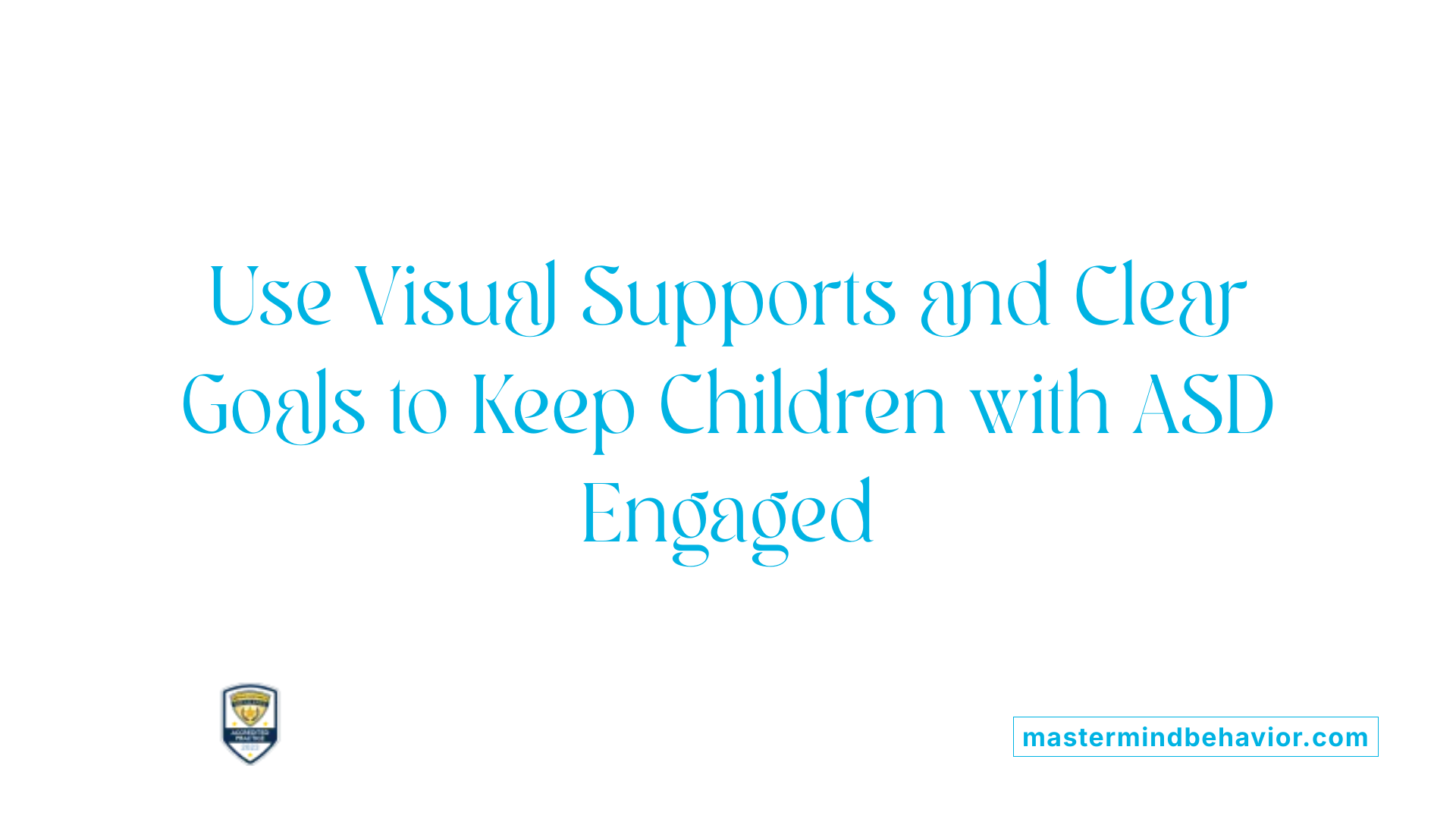Tips For Maintaining Motivation For Children During ABA Programs

Understanding the Importance of Motivation in ABA Programs
Motivation plays a pivotal role in the success of Applied Behavior Analysis (ABA) therapy, especially for children with autism spectrum disorder (ASD). When children are motivated, they are more engaged, participate actively, and are more likely to acquire and generalize new skills. This article explores proven strategies and techniques to maintain and enhance motivation throughout ABA programs, ensuring more effective and joyful learning experiences.
The Role of Preference Assessments and Personalization in Motivation

Conducting preference assessments
Preference assessments are critical tools in ABA therapy to determine what genuinely motivates a child. These assessments can be formal, such as trial-based methods where various items or activities are systematically tested, or informal, involving observations and conversations with the child and caregivers. The goal is to identify stimuli that reliably reinforce specific behaviors, helping therapists tailor interventions effectively.
Identifying individual motivators
Every child has unique interests and motivators, ranging from toys and treats to social attention or sensory experiences. By exploring these preferences through various assessment techniques, practitioners gather valuable information. Recognizing what excites or interests the child allows for the creation of engaging learning environments that foster participation and enthusiasm.
Personalizing reinforcement strategies
Once preferences are identified, they can be integrated into reinforcement strategies tailored to each child's needs. This might involve using preferred snacks, toys, or activities as rewards, or incorporating sensory stimulation and social attention. Creativity in choosing reinforcers, beyond conventional options, keeps motivation high and learning effective.
How do understanding a child's preferences help boost motivation in ABA therapy?
Understanding a child's preferences is fundamental because it helps identify specific items or activities that naturally motivate the child. Conducting preference assessments allows therapists to determine which stimuli serve as effective reinforcers, increasing the likelihood that desired behaviors will occur. When personalized preferences are incorporated into reinforcement strategies, they enhance intrinsic motivation, making learning more meaningful. This approach not only improves skill acquisition but also ensures that behaviors are maintained over time. Using models like Q-learning, therapists can refine their reinforcement choices continually, adapting to the child's changing interests. Ultimately, aligning therapy with the child's unique preferences fosters greater motivation and better outcomes.
Creative Reinforcement Strategies Beyond Toys and Treats

How can motivation improve the overall effectiveness of ABA therapy?
Motivation plays a vital role in enhancing ABA therapy outcomes. When children are motivated, they participate more actively and with greater enthusiasm, which leads to better learning experiences. Building trust and rapport through personalized reinforcement makes children more receptive to acquiring new skills.
Using diverse and engaging reinforcement methods tailored to each child's preferences fosters a positive and encouraging environment. Motivated children are more likely to persevere through tough tasks, boosting their progress in communication, social interactions, and adaptive behaviors.
To keep motivation high, it’s important to remember that reinforcement techniques should be fun and meaningful. This may involve pairing sessions with activities children enjoy or providing rewards that truly resonate with them. When children find therapy engaging, they are more likely to stay attentive and motivated in the long run, which overall increases the effectiveness of ABA interventions.
Using attention, activities, sensory experiences as reinforcers
While toys and treats are common reinforcers, therapists and parents can think outside the box.
Attention — giving children positive social attention, praise, or immediate acknowledgment — is a powerful motivator.
Activities such as dancing, playing a favorite game, or engaging in preferred hobbies can serve as rewards.
Sensory experiences, like playing with textured materials or listening to favorite music, can also motivate children, especially those with sensory preferences.
Incorporating these reinforcers into sessions helps maintain engagement and can be particularly effective for children who may not respond well to traditional rewards.
Making reinforcement meaningful
The value of reinforcement increases when it is genuinely meaningful to the child. For example, a child who loves singing might find praise or participation in a singing activity more motivating than generic praise.
Parents and therapists should observe what naturally excites each child, such as specific activities, interests, or sensory inputs, and incorporate these into reinforcement strategies.
Making rewards relatable to the child's daily life ensures that behaviors are reinforced in contexts outside of therapy, promoting generalization of skills.
Varying reinforcement to prevent satiation
To keep reinforcement effective, it is crucial to vary the types of rewards used.
Repeated exposure to the same reinforcer can lead to satiation, where the child loses interest.
By alternating between different types of reinforcers — from tokens to favorite snacks, or favorite activities — motivation remains high.
Introducing new rewards periodically also prevents boredom, maintaining the child's enthusiasm and willingness to participate.
In summary, integrating diverse, meaningful, and rotating reinforcement strategies can significantly boost the child's motivation, leading to more effective ABA therapy sessions and better long-term skill development.
The Power of Motivating Operations (MOs) in ABA
What are MOs, and what are their types (EOs and AOs)?
Motivating Operations (MOs) are environmental factors that influence the likelihood of a behavior happening by changing how much a reinforcer or punisher is valued at a specific moment. They help explain why a child behaves in a certain way.
There are two main kinds of MOs:
- Establishing Operations (EOs): These increase the value of a reinforcer, making the child more motivated to engage in behaviors that lead to that reward.
- Abolishing Operations (AOs): These decrease the reinforcer's value, reducing the child's motivation to pursue that specific reinforcement.
For example, if a child is hungry (an EO), food becomes more appealing, motivating them to request or seek out food. Conversely, if the child is full (an AO), the food's value drops, and they are less inclined to seek it.
How can MOs be recognized through behavior and data?
Being aware of MOs involves observing changes in a child's actions and tracking data over time. When a child's motivation shifts, their behaviors often change too. For instance, an increase in requesting behaviors might indicate a hunger-driven EO.
Preference assessments, informal observations, and behavioral data collection help identify these shifts. Recognizing when a child is more or less motivated allows therapists and parents to adjust strategies accordingly.
How can MOs be manipulated to increase motivation?
Manipulating MOs involves changing environmental conditions to enhance motivation. For example, withholding a preferred toy before a session can create a sense of deprivation, functioning as an EO that boosts motivation.
In skill acquisition, creating motivating conditions—like temporarily removing access to a favorite item—encourages requesting or other desired behaviors. Similarly, in behavior reduction, understanding when a child's behavior becomes more likely due to certain MOs can guide interventions to modify those environmental factors.
Parents and therapists can work together to manipulate MOs carefully and ethically. This might include scheduling activities at times when the child is naturally more motivated or using preferred items to support learning.
How do MOs support ongoing motivation and healthy habits?
Using MOs thoughtfully fosters sustained engagement. Regularly assessing preferences and adjusting environmental factors helps maintain a child's motivation over time.
Incorporating natural environment teaching—learning in real-life contexts—can make behaviors more meaningful and enduring. Consistent reinforcement, pairing preferred activities with learning, and creating predictable routines also help embed healthy habits.
Overall, understanding and applying MOs allow for personalized, flexible strategies that keep children motivated, support skill development, and help establish positive behaviors.
Environmental Factors Supporting Motivation in ABA Sessions

What environments can support and foster motivation during ABA therapy sessions?
Creating the right environment is essential for maintaining motivation during ABA therapy. Safe, comfortable, and distraction-free spaces serve as ideal settings for effective learning. These environments can include homes, clinics, or structured community locations tailored to the child's needs. Removing unnecessary distractions helps children focus on tasks and engage more fully.
Incorporating materials that interest the child, such as preferred toys, sensory items, or visual supports, can boost their enthusiasm. Using positive reinforcement, like praise or preferred items, encourages children to participate actively. Personalization is crucial; adapting the environment to match each child's unique interests and preferences makes the sessions more engaging.
Building strong, collaborative relationships with therapists and family members also plays a significant role. When everyone shares a common goal and communicates effectively, children are more motivated to learn.
Establishing consistent routines and clear goals, while tracking progress and celebrating achievements, further promotes motivation. These strategies foster a positive atmosphere where children feel successful and encouraged. Integrating therapy into natural settings and daily routines helps children generalize skills, fostering a sense of competence.
In summary, environments that are safe, personalized, and supportive, combined with a focus on positive experiences and relationships, create ideal conditions for motivating children during ABA therapy.
Strategies for Caregivers to Sustain Child Motivation
What practical tips can caregivers use to sustain a child's motivation in ABA sessions?
Caregivers play a vital role in keeping children motivated during ABA therapy. One effective approach is using praise and positive reinforcement that resonate with the child's preferences. For example, offering a favorite toy or activity after successful responses encourages continued engagement.
Making activities fun and interactive is also essential. Incorporating play, role-playing, or technology-based tasks can make learning lively and enjoyable. Visual supports, such as picture charts or timers, help children understand what to expect, reducing anxiety and promoting participation.
Establishing clear routines and setting small, achievable goals give children a sense of predictability and accomplishment. These routines can include visual schedules that guide them through their day and help them anticipate upcoming activities.
Caregivers should also involve themselves outside of formal therapy sessions. Using ABA strategies at home—like rewarding approaches to daily tasks—reinforces learning and promotes generalization across settings. Regular communication and collaboration with therapists ensure consistency, which is crucial for motivation.
Additionally, creating a structured environment that is predictable and nurturing supports independence, curiosity, and sustained enthusiasm for learning. Adjusting goals based on progress keeps tasks relevant, challenging, yet attainable, thus maintaining the child's motivation over time.
A combination of tailored reinforcement, engaging activities, predictable routines, and active caregiver involvement creates a positive learning atmosphere that encourages children to thrive in ABA therapy.
Using Naturalistic Teaching and Visual Supports to Maintain Engagement

How do understanding a child's preferences help boost motivation in ABA therapy?
Identifying what a child enjoys or finds rewarding is essential in ABA therapy. When therapists conduct preference assessments—either through formal trial-based methods or informal observations—they discover specific items or activities that genuinely motivate the child. These preferences can include favorite toys, activities, sensory experiences, or even attention from adults.
Using this information, professionals tailor reinforcement strategies that incorporate the child's interests, making learning more appealing. For example, if a child prefers bubbles, a therapist might use bubbles as a reward for desired behaviors. This approach increases engagement because the child perceives the intervention as more rewarding.
Moreover, understanding preferences allows for more strategic and flexible use of reinforcement. Techniques like Q-learning, a type of reinforcement learning model, help continuously adapt and identify the most motivating stimuli for each child. This personalization enhances intrinsic motivation and facilitates more effective skill development.
In summary, aligning therapy activities with the child's unique preferences transforms the learning experience from a task into an engaging, motivating activity, which promotes consistent participation and sustainable behavioral change.
Making Learning Fun and Relevant for Children with ASD

What techniques are effective for maintaining motivation in children during ABA therapy?
Keeping children engaged and motivated during ABA therapy can be challenging but is essential for effective learning. One of the most effective strategies involves understanding each child's unique preferences. Conducting preference assessments, including informal observations and conversations, helps identify what naturally motivates the child. This can include toys, treats, social attention, activities, or sensory experiences.
Incorporating these preferences into therapy sessions makes learning more appealing. Using a variety of preferred reinforcers, such as toys, snacks, or social praise, and delivering them immediately after desired behaviors, reinforces motivation. It is also helpful to pair reinforcers with verbal praise to build social feedback skills. To prevent satiation—where the child loses interest in the reinforcer—alternating between different reinforcers is beneficial.
Visual supports are another key tool. They help children understand what is expected and celebrate successes, boosting confidence. Breaking tasks into small, manageable steps and providing clear prompts make activities less overwhelming, encouraging persistence.
Regularly reviewing the child's likes and progress ensures reinforcers remain relevant and motivating. Additionally, embedding learning opportunities into natural environments—like everyday routines—can make therapy feel more meaningful.
Manipulating Motivating Operations (MOs)—environmental factors that influence reinforcer value—also plays a crucial role. For example, temporary deprivation of preferred items can increase their appeal, motivating children to engage in requesting or other desired behaviors.
Combining these techniques—personalized reinforcement, visual supports, task breakdowns, and environment adjustments—creates a dynamic therapy environment. This approach maintains high motivation levels, promoting sustained engagement and progress in children with ASD.
Maximizing Long-Term Motivation and Developmental Gains
Maintaining motivation is essential to the success of ABA therapy. By personalizing interventions, creatively using reinforcement, understanding motivating factors, and creating supportive environments, therapists and caregivers can foster sustained engagement. Incorporating naturalistic methods, visual supports, and consistent routines further enhances motivation, leading to meaningful progress in developing communication, social, and adaptive skills. Ultimately, a motivated child is a confident, curious learner with the potential to achieve lasting positive outcomes.
References
- How to Keep a Child's Motivation in ABA
- Motivating Operations in ABA Therapy: What, When & How
- 9 Motivational Techniques You Can Use to Encourage ...
- A Guide to Creating Engaging ABA Activities for Children
- 6 Healthy Habits You Can Build in Your Child with ABA ...
- Tips To Keep Your Child Motivated In Therapy
- 7 Real ABA Therapy Examples & Their Benefits
- Treatment and Intervention for Autism Spectrum Disorder
Recent articles

How ABA Therapist Uses Data To Adjust Behavior Plans
Data-Driven Insights: Shaping Effective ABA Behavior Plans

ABA Therapy For Teaching Responsibility In Managing Schedules
Harnessing ABA Therapy to Cultivate Schedule Management Skills in Children with Autism

What Families Should Know About ABA Therapy Ethics And Consent
Understanding the Foundations and Ethical Framework of ABA Therapy

How ABA Providers Can Help Teachable Moments Arise Throughout the Day
Creating Learning Moments Anywhere: The Role of ABA Providers in Everyday Development

How to Navigate Autism Laws and Legal Support Services In NJ And GA
Comprehensive Legal Frameworks Supporting Autism Therapy in NJ and GA

How ABA Therapy Improves Adaptation To New School Environments
Supporting Children with Autism Transitioning into School through ABA Therapy



